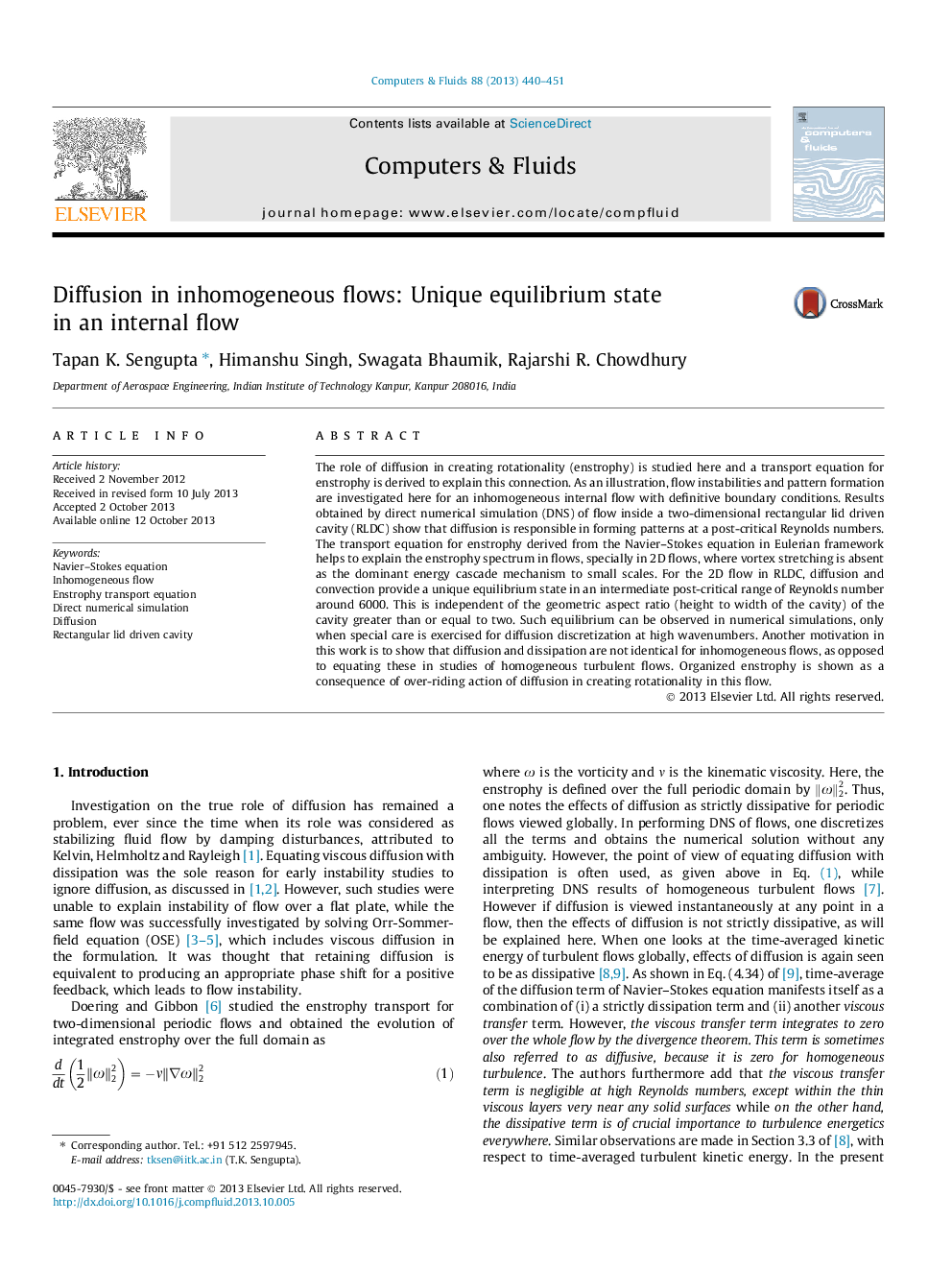| Article ID | Journal | Published Year | Pages | File Type |
|---|---|---|---|---|
| 7157324 | Computers & Fluids | 2013 | 12 Pages |
Abstract
The role of diffusion in creating rotationality (enstrophy) is studied here and a transport equation for enstrophy is derived to explain this connection. As an illustration, flow instabilities and pattern formation are investigated here for an inhomogeneous internal flow with definitive boundary conditions. Results obtained by direct numerical simulation (DNS) of flow inside a two-dimensional rectangular lid driven cavity (RLDC) show that diffusion is responsible in forming patterns at a post-critical Reynolds numbers. The transport equation for enstrophy derived from the Navier-Stokes equation in Eulerian framework helps to explain the enstrophy spectrum in flows, specially in 2D flows, where vortex stretching is absent as the dominant energy cascade mechanism to small scales. For the 2D flow in RLDC, diffusion and convection provide a unique equilibrium state in an intermediate post-critical range of Reynolds number around 6000. This is independent of the geometric aspect ratio (height to width of the cavity) of the cavity greater than or equal to two. Such equilibrium can be observed in numerical simulations, only when special care is exercised for diffusion discretization at high wavenumbers. Another motivation in this work is to show that diffusion and dissipation are not identical for inhomogeneous flows, as opposed to equating these in studies of homogeneous turbulent flows. Organized enstrophy is shown as a consequence of over-riding action of diffusion in creating rotationality in this flow.
Related Topics
Physical Sciences and Engineering
Engineering
Computational Mechanics
Authors
Tapan K. Sengupta, Himanshu Singh, Swagata Bhaumik, Rajarshi R. Chowdhury,
